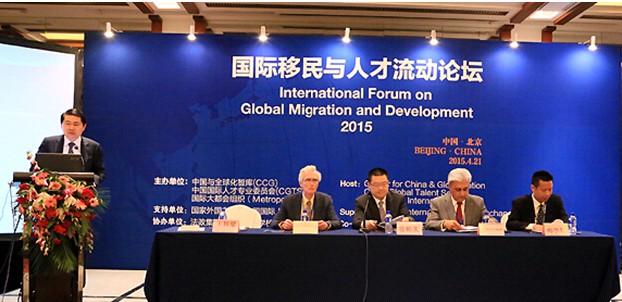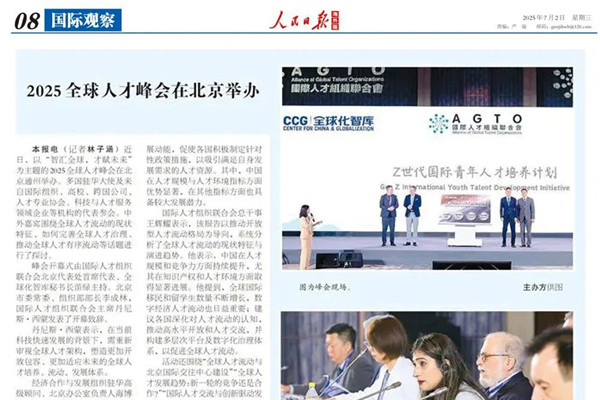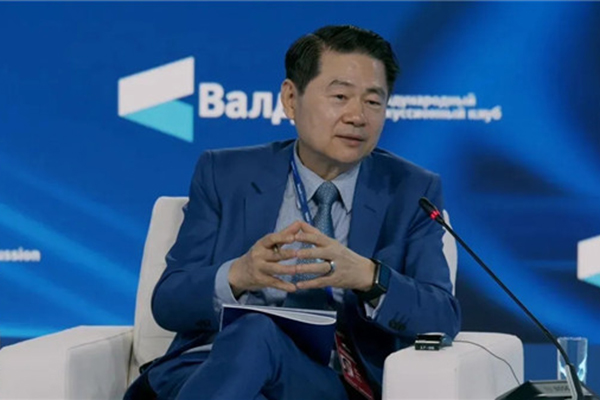【中国网】China advised to tap migration’s ’talent dividend’
2015年4月22日
China should rev up its efforts to tap into the potential "talent dividend" brought especially by migration, officials and scholars observed during a forum held in Beijing on Tuesday.
"Talent dividend" refers to economic and development gains brought by highly skilled and talented people, a vital group of whom is constituted by international immigrants to China as well as Chinese who return to their home country after studying and working abroad.
Competition for talent is intensifying around the world, and China is a major part of this trend. The country is both attracting talented international immigrants and seeing many of its own talented people emigrating, noted Howard Duncan, executive head of the Metropolis Project, a Canada-based network of researchers, policymakers, international organizations and civil society organizations that focus on migration-related issues.
"One of the challenges that China and other countries face is finding a way to maximize the benefits for [the] country in having more people coming and perhaps fewer people leaving," Duncan said at the International Forum on Global Migration and Development.
Since China began to open up to the world in 1978, the inflow and outflow of migrants to and from the country have both increased dramatically. But a "migration deficit," or gap between the number of emigrants and immigrants, has increased over the past two decades from 3.76 million in 1990 to 8.49 million in 2013, said Wang Huiyao, president of the Center for China and Globalization, a think tank dedicated to promoting the globalization of Chinese talents and enterprises.
International migrants only account for 0.06 percent of the Chinese population, while this figure is 10 percent on average in developed countries and 1.6 percent in developing ones, according to Wang.
Skilled migrants are major contributors to the receiving countries’ economies and their high-tech industries, noted Wang.
For instance, 24.3 percent of engineering and technology companies in the United States had at least one key founder who was foreign-born, and the figure was as high as 43.9 percent in Silicon Valley, according to Wang, who quoted data released by the Kauffman Foundation in 2012.
A regression analysis by Liu Xuezhi, vice president of the Chinese Academy of Personnel Science at the Ministry of Human Resources and Social Security, shows that there is a high correlation between China’s GDP and highly skilled migration represented by Chinese students who study abroad, foreign students studying in China, and Chinese students who come back to China after studying abroad.
However, international students studying in China only account for 0.3 percent of all students in the country, a much lower proportion than that in many Western and Asian countries, according to data compiled by the Center for China and Globalization, the organization which hosted Tuesday’s forum.
"Highly skilled and high-end migrants will be attracted when they see there are good facilities, a good environment, schooling, medical facilities, an easy [way of] doing business, finding jobs and so on. When those things become more affordable and reachable, you will see more international migrants attracted to China," Ovais Sarmad, chief of staff of the International Organization for Migrants, told China.org.cn on the sidelines of the forum. But he also noted that China has already attracted more international migrants than before.
China’s cabinet, the State Council, issued an opinion on accelerating the country’s innovation-driven strategy in March as part of the effort to transform the country from a labor-intensive and export- and investment-dependent economy to a high-end and innovation-driven economy. The country pledged to explore the establishment of a special immigration system for skilled workers in order to attract more talented immigrants.
There were over 848,500 foreigners living in China in 2013, registering an annual growth of 3.9 percent. Most of them are from South Korea, the United States, Japan, Myanmar, and Vietnam.






